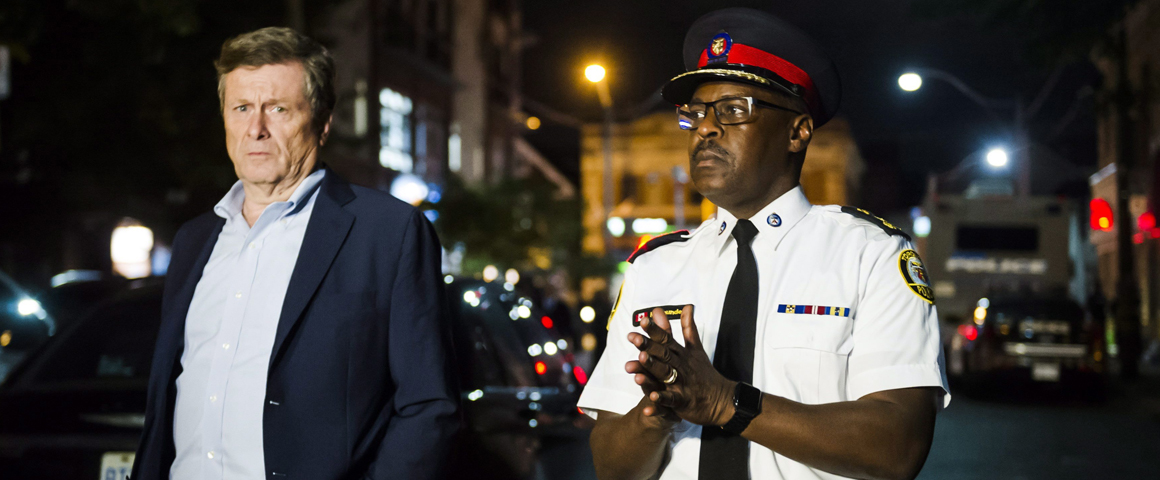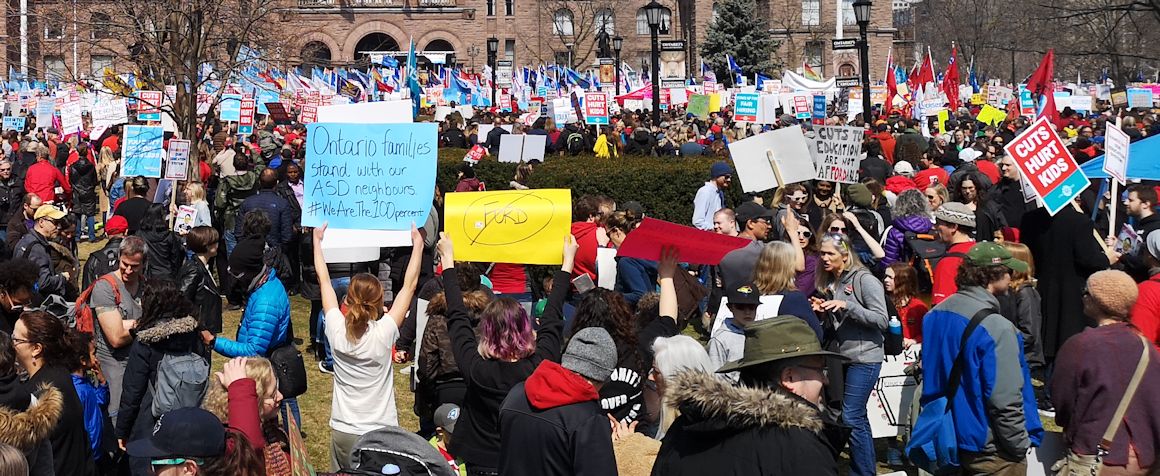On July 12, Toronto Mayor John Tory and Police Chief Mark Saunders announced a $3 million plan to address recent gun violence by placing 200 more officers throughout the city in the evening. They also pledged to come up with an additional $12 million to expand existing community programs serving at-risk youth by pooling federal and municipal monies. These monies are alleged to address the spike in gun violence that has resulted in nine deaths since the beginning of the summer.
The announcement, however, is an elaborate diversionary tactic to appease the Toronto Police Association and frontline officers who are unhappy with changes made to their core service and to satisfy community leaders who are demanding program funding to address the needs of at-risk youth. The measures will likely have a zero-sum impact on at-risk youth themselves.
The extra money to place 200 more officers on the streets does not mean hiring 200 additional officers, which is one of the demands being made by the police union. However, the additional overtime for those 200 officers will go a long way in placating the restless troops, and perhaps soften the hardball attack led by union boss, Mike McCormick, against Tory and Saunders.
It certainly will address the moaning by some front-line officers who will benefit from the extra hours, to the tune of $21,000 per officer for the summer. How much of this $3 million overtime money was already in the budget as the summer allotment to cover vacations and events like the Caribbean Festival? Is this just a decoy? Have Tory and Saunders announced a routine expense that in all other years would just have been quietly approved?
The $12 million funding for existing community programs for at-risk youth is money that is yet to be approved by Council, and yet to be received from the feds. The announcement that it will be applied for, however, will satisfy many community leaders who have been lobbying for more funding for at-risk youth for years.
Will this funding be for expanding existing summer programs, or will there be funds to augment year-round, sustainable programs? Short-term, unsustainable funding does nothing to support the needs of at-risk youth over the long-term. We’ve been there before.
In 2005, the “summer of the gun,” money was thrown at programs that engaged youth in sports, predominantly basketball. Community Centres in the poorest neighbourhoods were asked if they could provide “midnight basketball” programs. All this meant was that they received funds to hire youth workers to keep gyms open, most times only until 11 pm. Any later than that, and the city would have to pay overtime to their maintenance staff.
However, the youth playing basketball at their local community centres aren’t the problem. The youth “at-risk” are those whose education may have been interrupted, whose employment histories are negligible and who become more and more unemployable the older they get. These are the youth who more often than not, get caught up in gangs, guns and street violence. What is needed is long-term programming that addresses their employment needs, provides remedial education and helps develop needed social and life skills. Simply providing more resources for programs like “midnight basketball” is like throwing band-aids at someone whose leg has been severed by a street car.
We also don’t need to copy the fiasco that happened when the Provincial Government came up with the Youth Challenge Fund post-2005. Millions of dollars in grants were given to pseudo youth-led organizations who were founded simply to apply for and receive this new funding. I worked at the Lawrence Heights Community Centre as the Recreation Coordinator at the time and couldn’t believe the number of funded projects who declared that not only were they going to set up shop in the community, but they had approval to use our Centre for their ongoing programs. I had never heard of most of them, nor did they ever show up in the community once they received the money!
At the City’s recent Board of Health meeting, members agreed to look at gun violence from the point of view of the health impacts of community violence. This is a very good first step, that takes away the band-aid approach of adding more policing and instead addresses the root causes and effects of gun violence.
One of the programs that the Board might consider is an investment in after-school, evening and weekend leadership programs for youth 10-17 years old. Youth leadership programs with a focus on social skills, civics and social justice issues have proven benefits for keeping this age group, pre-teens especially, engaged in recreation activities. Left to themselves, most 10-12-year-olds would rather hang out at the mall than be made to go to a children’s after-school program. Engaged at the Community Centre, they improve their job skills and are more likely to end up with part-time employment.
The Tory/Saunders violence prevention plan will no doubt ease some of the tensions among those concerned with addressing the issues of at-risk youth, front-line officers, the police union and community leaders.
The better approach is the one proposed by the Board of Health. Youth in the poorest neighbourhoods in our City know exactly what the Tory/Saunders plan is – a publicity stunt. One youth said to me, just a few years ago: “It’s been pretty quiet lately on the funding front. I guess we need to see a few more street shootings before the funds start flowing again.”




